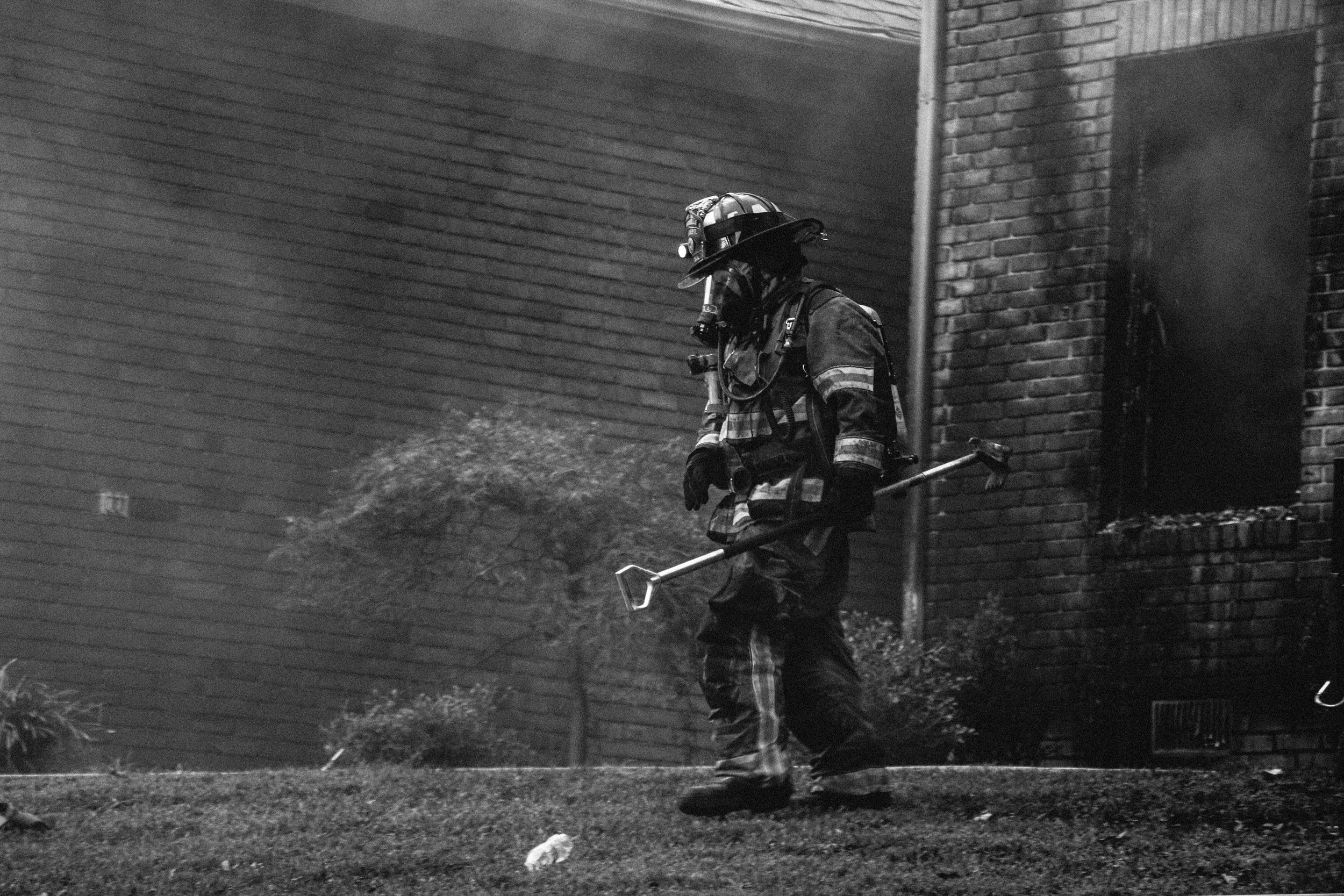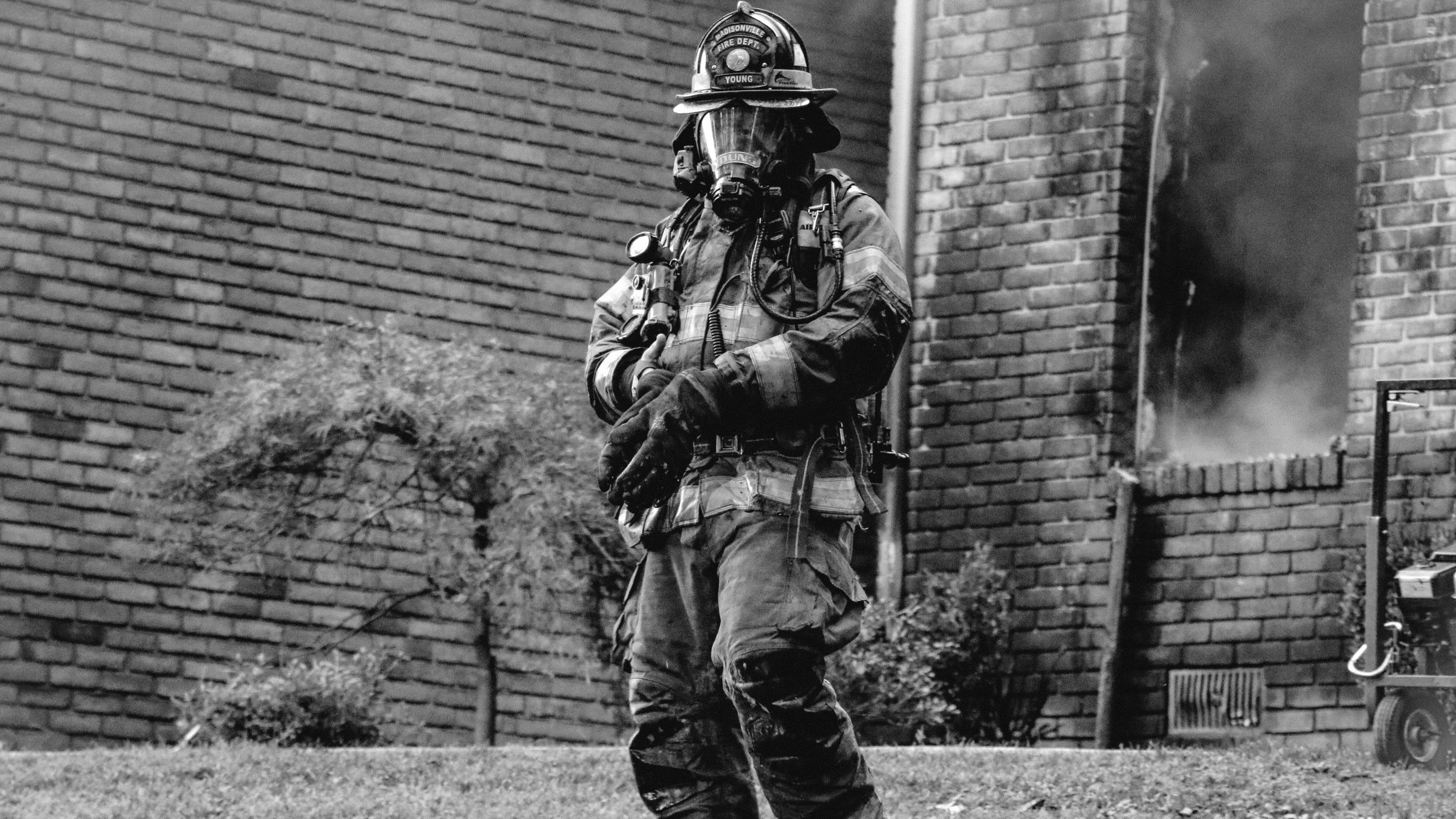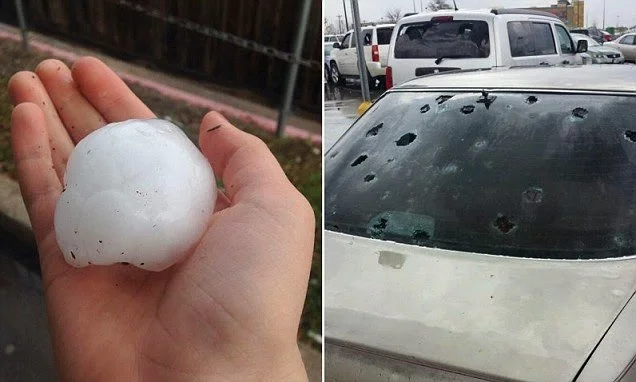
Restoring Homes, Restoring Lives: Your Trusted Public Adjusters
-
![]()
Fire
Types of Fires:
Kitchen Fires: Grease fires or cooking mishaps can quickly escalate, spreading flames to surrounding combustible materials and causing extensive damage.
Electrical Fires: Faulty wiring, overloaded circuits, or malfunctioning appliances can spark electrical fires, engulfing homes in flames and endangering occupants.
Wildfires: Uncontrolled wildfires can engulf entire neighborhoods, destroying homes, properties, and natural landscapes with devastating speed and intensity.
Devastation for Homeowners:
Structural Damage: Fires can engulf homes in flames, causing structural collapse, roof collapse, and widespread destruction of walls, floors, and ceilings.
Smoke and Soot Damage: Even in areas untouched by flames, smoke and soot can permeate walls, furniture, and belongings, leaving behind pervasive odors, stains, and contamination.
Water Damage: Firefighters' efforts to extinguish flames can result in water damage from hoses, sprinkler systems, or firefighting foam, exacerbating the destruction.
Loss of Personal Belongings:
Irreplaceable Items: Fires can consume cherished belongings, such as family heirlooms, photographs, keepsakes, and memorabilia, leaving homeowners with profound emotional loss.
Essential Possessions: Furniture, clothing, electronics, and household items may be damaged or destroyed by flames, smoke, heat, or water, compounding the sense of loss and displacement.
Rebuilding Lives After Fire:
Emotional Toll: Rebuilding lives after a fire involves coping with trauma, grief, and uncertainty, as homeowners grapple with the loss of their home, possessions, and sense of security.
Financial Strain: The financial burden of rebuilding, repairing, or replacing a fire-damaged home can be overwhelming, especially for homeowners without adequate insurance coverage or savings.
Long Road to Recovery: The process of rebuilding lives after a fire requires patience, resilience, and support from community, friends, and professionals, as homeowners navigate insurance claims, construction projects, and emotional healing.
-
![]()
Smoke
Causes of Smoke Claims:
Exposure to surrounding fires: Smoke can infiltrate homes through windows, doors, and vents during nearby wildfires or structural fires in the vicinity.
Furnace malfunctions: Malfunctioning furnaces can emit smoke, soot, or carbon monoxide into the home, especially if not properly maintained or ventilated.
Small kitchen fires: Cooking accidents or grease fires in the kitchen can produce smoke that spreads throughout the home, causing damage to surfaces and belongings.
Small electrical fires within walls: Electrical issues such as faulty wiring, overloaded circuits, or damaged outlets can spark small fires within walls, generating smoke and potentially leading to extensive damage.
Aftermath of Smoke Claims:
Soot and Smoke Residue: Smoke leaves behind soot and residue on walls, ceilings, furniture, and belongings, requiring thorough cleaning and restoration efforts.
Lingering Odors: Smoke odors can permeate fabrics, carpets, and porous materials, necessitating deodorization treatments to eliminate unpleasant smells.
Health Hazards: Inhalation of smoke particles and soot residue can pose health risks, triggering respiratory issues and aggravating existing conditions.
Property Damage: Smoke can discolor surfaces, corrode metals, and degrade materials over time, leading to aesthetic deterioration and reduced property value.
Emotional Distress: Dealing with the aftermath of a smoke claim can be emotionally challenging for homeowners, requiring patience, resilience, and support throughout the restoration process.
-
![]()
Water
Burst Pipes: When pipes burst, they release a large volume of water into the property, often causing immediate flooding.
Leaky Fittings: Faulty fittings, such as those in faucets, toilets, or appliances, can slowly leak water over time.
Storm-Related Damage: Severe weather events like heavy rain, hurricanes, or flooding can result in water entering the property through roof leaks, damaged windows, or overflowing drains.
Sewer Line Breakages: Breaks or blockages in sewer lines can cause raw sewage to back up into the property, resulting in unsanitary conditions and severe contamination.
Malfunctioning Water Heaters: Water heaters can fail due to issues such as corrosion, faulty components, or improper installation.
Dishwasher Leaks: Leaks in dishwashers can go unnoticed for extended periods, allowing water to seep into surrounding cabinetry, flooring, and walls.
Overall, water loss claims can result in a range of devastating consequences, including structural damage, health hazards from mold and contaminants, and financial strain from repair costs and property value depreciation. It's essential for homeowners to promptly address water damage issues and work with qualified professionals to mitigate the damage and restore their property to a safe and habitable condition.
-
![]()
Flood
Sump pump failure coverage in homeowners insurance offers valuable protection against the consequences of flooding, which is typically not covered under standard policies. Since flood insurance is only valid when FEMA declares a flood event, having sump pump failure coverage can fill the gap by addressing damage caused specifically by sump pump malfunctions. This coverage extends financial protection to homeowners, helping offset the costs of repairing or replacing property damaged by flooding resulting from sump pump failure. It provides peace of mind and encourages proactive maintenance of sump pump systems to prevent and mitigate potential flooding risks.
-
![]()
Vehicle
Impact of Vehicle Damage:
Structural Damage: Vehicle collisions with homes can cause significant structural damage, compromising the integrity of walls, foundations, and support beams.
Property Destruction: Vehicles crashing into homes can destroy windows, doors, fences, and landscaping, leading to extensive property damage.
Safety Hazards: Vehicle impact can create safety hazards for occupants, with the potential for injuries from flying debris, structural collapse, or vehicle-related accidents.
Financial Loss: Repairing or replacing damaged structures and property can incur substantial costs, causing financial strain for homeowners.
Emotional Toll: Dealing with the aftermath of a vehicle damage claim can be emotionally distressing for homeowners, as it disrupts their sense of safety and security in their own homes.
-
![]()
Wind
Impact of Wind Damage:
Missing Siding: High winds can rip off siding panels or sections from the exterior of homes, leaving underlying structures vulnerable to water intrusion and further damage.
Damaged Shingles: Strong winds can lift and dislodge roof shingles, exposing the roof deck to moisture, leaks, and potential structural deterioration.
Destruction of Signs: Windstorms can topple or damage outdoor signs, billboards, or structures, leading to aesthetic damage and potential safety hazards.
Structural Vulnerability: Severe wind gusts can weaken the structural integrity of buildings, causing shifts in foundations, cracks in walls, or even partial collapses in extreme cases.
Disruption of Utilities: High winds may knock down power lines, poles, or utility equipment, disrupting electrical service and posing fire hazards or electrocution risks.
Aftermath and Consequences:
Water Intrusion: Wind damage to roofing and siding can compromise the home's waterproofing, leading to water intrusion, moisture buildup, and potential mold growth.
Repair Costs: Repairing wind-damaged structures, roofs, siding, and signs can incur significant costs, including materials, labor, and potential code upgrades.
Insurance Claims: Homeowners may need to file insurance claims to cover wind damage repairs, navigating the claims process to ensure adequate coverage and timely resolution.
Safety Concerns: Wind damage can create safety hazards for occupants and passersby, requiring prompt mitigation and restoration efforts to address potential risks and ensure property safety.
-
![]()
Hail
Roof Damage:
Hail can cause dents, punctures, or fractures in roofing materials, including asphalt shingles, wood shakes, or metal panels, compromising their waterproofing and structural integrity.
Cracked or Missing Shingles: High-impact hailstones can crack or dislodge roofing shingles, exposing the underlying roof deck to moisture infiltration and potential leaks.
Granule Loss: Hail impact can strip away protective granules from asphalt shingles, reducing their lifespan and making them more susceptible to UV degradation and water damage.
Siding Damage:
Dents and Dings: Hailstones can leave behind dents, dings, or pockmarks on siding materials, such as vinyl, aluminum, or wood, detracting from the aesthetic appeal and structural integrity of the exterior walls.
Cracks or Fractures: Intense hailstorms may cause cracks or fractures in siding panels, allowing moisture infiltration, rot, or mold growth within the wall cavities.
Paint Damage: Hail impact can chip, scratch, or peel paint finishes on siding surfaces, necessitating repainting or refinishing to restore the appearance and protection of the exterior cladding.
Gutter Damage:
Dented or Bent Gutters: Hailstones can dent or bend gutter systems, hindering proper drainage and diverting rainwater away from the roof edge, leading to water buildup and potential water damage.
Clogged Downspouts: Hail debris may accumulate in gutter downspouts, causing blockages and preventing efficient water flow, increasing the risk of overflow and water infiltration around the foundation.
Detached or Loose Fasteners: High-impact hail can dislodge gutter fasteners or brackets, loosening the attachment of gutters to the roofline and compromising their stability and functionality.
Vehicle Damage:
Dents and Dings: Hailstones can leave behind numerous dents, dings, or dimples on vehicle exteriors, impacting the appearance, resale value, and structural integrity of the vehicle body.
Broken Glass: Intense hailstorms may shatter vehicle windows, windshields, or mirrors, posing safety risks to occupants and necessitating costly repairs or replacements.
Paint Damage: Hail impact can chip, scratch, or crack automotive paint finishes, exposing the underlying metal substrate to rust, corrosion, and deterioration over time.
-
![]()
Lightning
Impact of Lightning:
House Fires Due to Lightning: Lightning strikes can ignite fires in homes by directly hitting structures or by surging through electrical systems, causing electrical fires.
Electrical Failures: Lightning strikes can overload electrical circuits, damage wiring, or short-circuit appliances, leading to electrical failures and potential fire hazards.
HVAC Failures: Lightning-induced power surges can damage heating, ventilation, and air conditioning (HVAC) systems, causing malfunctions, component failures, or complete system shutdowns.
Structural Damage: Lightning strikes can cause structural damage to buildings, including roof damage, wall fractures, or foundation cracks, especially in older or poorly constructed homes.
Electronics Damage: Lightning-induced power surges can fry electronics, computers, televisions, and other sensitive devices, rendering them inoperable and requiring costly replacements.
Aftermath and Consequences:
Fire Damage: Lightning-related fires can result in extensive property damage, including structural damage, smoke damage, and water damage from firefighting efforts.
Electrical System Repairs: Homeowners may need to repair or replace damaged electrical wiring, circuits, outlets, and appliances affected by lightning strikes or power surges.
HVAC System Restoration: Lightning-damaged HVAC systems may require repair or replacement of components such as compressors, capacitors, motors, or control panels to restore functionality.
Insurance Claims: Homeowners may file insurance claims to cover lightning-related damages, coordinating with adjusters and contractors to assess losses and facilitate repairs.
Safety Measures: Implementing lightning protection systems, surge protectors, and grounding rods can help mitigate the risk of lightning damage and safeguard homes against future incidents.
-
![]()
Vandalism
Financial Distress:
Property Damage: Vandalism can result in costly damage to a home, including graffiti on walls, break-ins resulting in stolen or damaged belongings, and smashed windows or doors requiring repair or replacement.
Repair and Replacement Costs: Homeowners may face significant expenses to restore their property to its pre-vandalism condition, including cleanup, repairs to damaged structures, and replacement of vandalized items.
Increased Insurance Premiums: Filing vandalism claims with homeowners insurance may lead to higher premiums or policy cancellations, affecting long-term financial stability.
Emotional Distress:
Violation of Privacy: Vandalism constitutes a violation of the homeowner's sense of security and privacy, leaving them feeling vulnerable and exposed in their own home.
Fear and Anxiety: Break-ins and intentional property damage can instill fear and anxiety in homeowners, affecting their sense of safety and well-being.
Anguish Over Destruction: Witnessing intentional destruction of property, such as graffiti or smashed windows, can evoke feelings of anger, frustration, and helplessness among homeowners.
Sense of Violation: Vandalism can leave homeowners feeling violated and victimized, impacting their emotional well-being and sense of trust in their community.
Recovery Process:
Cleanup and Restoration: Homeowners must invest time and resources in cleaning up vandalism, repairing damaged property, and implementing security measures to prevent future incidents.
Support Networks: Seeking support from friends, family, and community resources can help homeowners cope with the emotional toll of vandalism and navigate the recovery process.
Preventative Measures: Implementing security enhancements such as alarm systems, security cameras, and neighborhood watch programs can deter future acts of vandalism and provide peace of mind for homeowners.
-
![]()
Theft
Relief Through Insurance Coverage: While the loss of sentimental items can be devastating, insurance coverage can provide a measure of relief by offering financial reimbursement for stolen belongings.
Compensation for Sentimental Loss: Although insurance cannot replace sentimental value, it can help alleviate the financial burden of the theft, enabling homeowners to allocate funds towards rebuilding their lives and replacing essential items.
Supporting Emotional Recovery: By facilitating the replacement of stolen possessions, insurance can play a supportive role in the emotional recovery process, offering homeowners a tangible means of moving forward and rebuilding what was lost.
Restoring a Sense of Security: Knowing that insurance coverage is available to assist in times of need can also help restore a sense of security and peace of mind, reassuring homeowners that they have a safety net to rely on during difficult times.
-
![]()
Freezing
Causes of Freezing Claims:
Frozen Water Lines Bursting: Subfreezing temperatures can cause water lines to freeze, leading to increased pressure within the pipes. When temperatures rise, the ice thaws rapidly, causing the pipes to burst and release large volumes of water.
Insufficient Insulation: Poorly insulated pipes are more susceptible to freezing, especially in unheated or exposed areas such as attics, crawl spaces, or exterior walls.
Lack of Heating: Failure to adequately heat or protect vulnerable areas of the home, such as basements, garages, or utility rooms, can contribute to freezing and subsequent pipe bursts.
Destruction Caused by Freezing Claims:
Burst Water Lines: When frozen water lines burst, they can release large quantities of water, causing extensive water damage to walls, floors, ceilings, and belongings.
Structural Damage: Water from burst pipes can seep into building materials, compromising structural integrity and leading to rot, warping, or collapse in severe cases.
Mold and Mildew Growth: Moisture from burst pipes creates ideal conditions for mold and mildew growth, posing health hazards and requiring costly remediation efforts.
Frozen Sewer Lines: Freezing temperatures can also cause sewer lines to freeze, leading to blockages, backups, and sewage spills that contaminate indoor spaces and require professional cleanup and repair.
Prevention Measures:
Proper Insulation: Ensuring adequate insulation for pipes in vulnerable areas can help prevent freezing by maintaining consistent temperatures.
Heating Maintenance: Regular maintenance of heating systems and pipes, including insulation, sealing gaps, and using heat tape or cables, can reduce the risk of freezing.
Drip Faucets: Allowing faucets to drip during freezing temperatures can relieve pressure within pipes and prevent them from freezing.
Temperature Monitoring: Monitoring indoor and outdoor temperatures and taking precautions during cold weather alerts can help homeowners prevent freezing and mitigate potential damage.
-
![]()
Mold
Causes of Mold:
Excess Moisture: Mold thrives in damp environments, often resulting from water leaks, floods, high humidity levels, or inadequate ventilation in areas such as bathrooms, kitchens, and basements.
Water Damage: Any form of water intrusion, whether from plumbing leaks, roof leaks, flooding, or condensation, can create conducive conditions for mold growth if left unaddressed.
Poor Ventilation: Inadequate airflow and ventilation can trap moisture indoors, promoting mold growth on surfaces such as walls, ceilings, and flooring.
Destruction Caused by Mold:
Property Damage: Mold can cause extensive damage to building materials, including wood, drywall, insulation, and carpeting, compromising their structural integrity and aesthetics.
Health Hazards: Exposure to mold spores can trigger allergic reactions, respiratory issues, and other health problems, particularly for individuals with asthma, allergies, or compromised immune systems.
Odor and Staining: Mold growth often produces musty odors and unsightly stains on surfaces, diminishing indoor air quality and aesthetic appeal.
Contamination: Mold contamination can spread rapidly throughout a property, affecting multiple areas and belongings, requiring thorough cleaning, remediation, and possibly replacement of affected materials.
Insurance Coverage for Mold:
Typically Not Covered Alone: Mold damage resulting from gradual causes, such as long-term humidity or neglect, is often excluded from standard homeowners insurance policies.
Coverage Triggered by Covered Loss: However, most policies provide coverage for mold damage if it arises as a result of a covered peril, such as water damage from a burst pipe or a roof leak.
Coverage Limitations: Policies may impose limits on mold coverage, with coverage amounts typically ranging from $2,500 to $10,000, depending on the specific policy terms and coverage options selected.
Additional Endorsements: Some homeowners may opt to purchase additional mold coverage endorsements or riders to increase coverage limits or extend coverage for mold-related losses beyond the standard policy limits.
-
![]()
Collapse
Causes of Collapse:
Structural Weakness: Aging or poorly constructed buildings may develop structural weaknesses over time, such as foundation settling, rotting wood, or corrosion of metal supports, increasing the risk of collapse.
Natural Disasters: Severe weather events, such as earthquakes, hurricanes, tornadoes, or heavy snow accumulation, can exert immense pressure on structures, leading to structural failure or collapse.
Soil Conditions: Shifting soil conditions, including expansive soils, sinkholes, or erosion, can undermine the stability of foundations and support structures, contributing to collapse.
Destruction Caused by Collapse:
Structural Damage: Collapses can result in extensive damage to the building's framework, including walls, floors, ceilings, and roof structures, rendering the property uninhabitable or unsafe.
Property Loss: Contents within the collapsed structure, such as furniture, appliances, personal belongings, and fixtures, may be damaged or destroyed, adding to the overall loss.
Underground Plumbing: In some cases, collapse events may also impact underground plumbing components, such as water and sewer lines, resulting in leaks, blockages, or damage to the plumbing infrastructure.
Safety Risks: Collapses pose significant safety risks to occupants and bystanders, with the potential for injuries or fatalities from falling debris, structural collapse, or subsequent hazards such as gas leaks or electrical hazards.
Insurance Coverage for Collapse:
Policy Provisions: Homeowners insurance policies typically provide coverage for collapse caused by specified perils, such as hidden decay, insect or vermin damage, weight of ice, snow, or sleet, or sudden and accidental tearing apart, cracking, burning, or bulging of specified systems.
Exclusions and Limitations: Policies may exclude coverage for collapses resulting from wear and tear, gradual deterioration, or earth movement, such as settling, shrinking, expanding, or shifting of soils.
Coverage for Underground Components: Some policies may extend coverage to include underground plumbing components affected by collapse events, subject to policy terms, conditions, and coverage limits.














